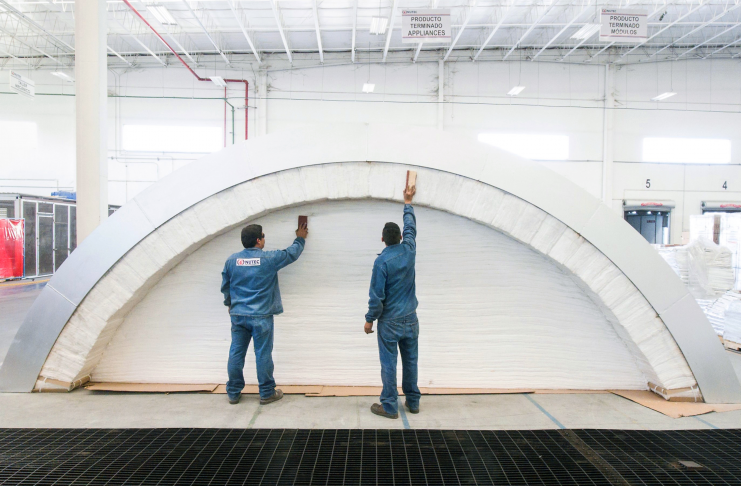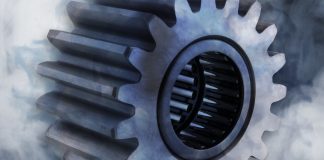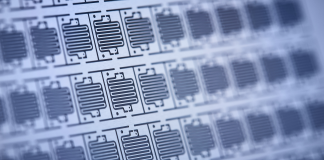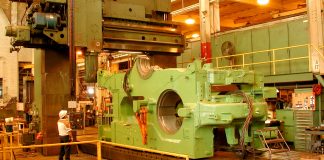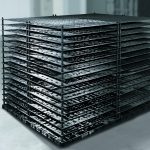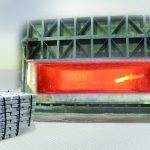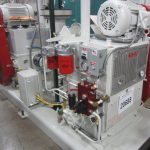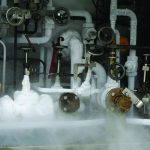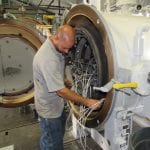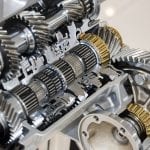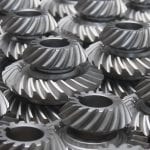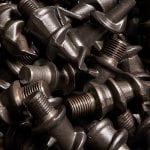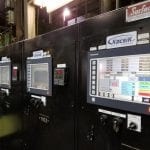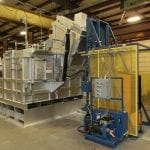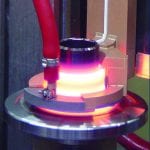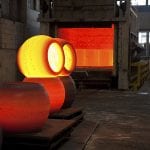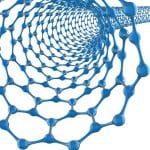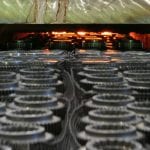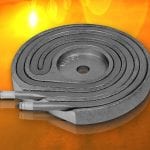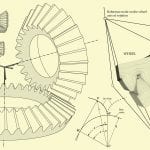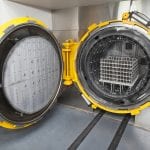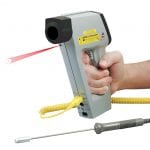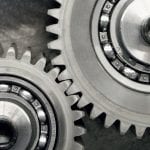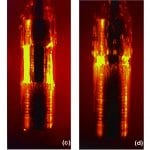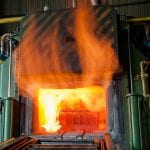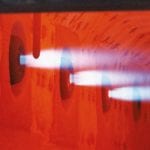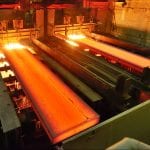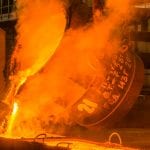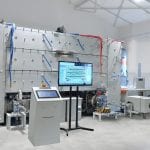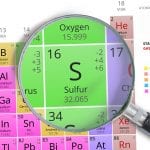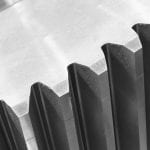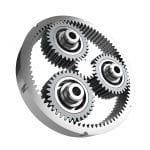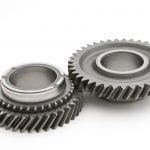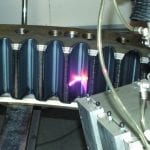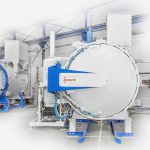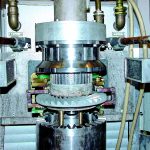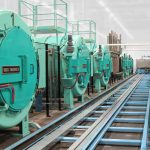Benefits of graphite and C/C fixturing
More heat-treating engineers are making the switch to graphite fixturing using carbon composite materials.
Temperature and accuracy
Three basic steps that can help in selecting the right thermocouple wire.
Noise in instrumentation circuits
How to control and understand “noise,” as well as installation considerations.
Selecting Industrial Vacuum Pumps
An analytical guide to the down-select process.
Reliable Vacuum Supply for Plasma Nitriding
Plasma nitriding is becoming more and more important for heat treatment.
Cryogenic process and application to ferrous alloy
Cryogenics or sub-zero treatment is the third parameter required to achieve maximum hardness in ferrous alloys.
Aerospace Testing & Pyrometry
With its motto, “Profit from our knowledge because quality is our standard,” Aerospace Testing & Pyrometry keeps a laser focus on aerospace pyrometry compliance and a top priority on the customers it serves.
Case Study: Cost effective, low distortion carburizing of internal helical ring gear for transmissions
There are many critical factors that are assessed when designing a gear that will be used in demanding applications such as engines or transmissions....
Extending Performance
Metal gears and precision components of all types are in growing demand for robotics, particularly in industrial sectors such as automotive, aerospace, and machinery....
Single-piece flow case hardening can be worked into in-line manufacturing
Case hardening by carburizing is the most common heat treatment in mass production, which relies on atmosphere or vacuum carburizing followed by oil or...
Case Hardening Basics: Nitrocarburizing vs. Carbonitriding
Confusion surrounding the case-hardening techniques of nitrocarburizing and carbonitriding prove the point that it's easy to get lost in the nomenclature behind heat-treating processes.
That...
Case Study: Conrad Kacsik and Modern Industries
Modern Industries, one of the largest heat-treating facilities in Pennsylvania, has seen its share of equipment come and go since its beginning 71 years...
Company Profile: Lindberg/MPH
Lindberg/MPH has been around for over 100 years. During that century, it has changed hands and names, but since it became part of Thermal...
Induction Heat Treating: How to Shorten the Time to Production
In an increasingly competitive world, it is good to pause and ask: How can we do our work faster, better, and use fewer resources?...
Ensuring Effective Furnace Lining Efficiency
Refractory engineers remain under constant pressure to increase the performance of furnaces, incinerators, and reactors to maximize energy efficiency. Although there are many materials...
Elemental Analysis of Metal Powders and Metal Parts Produced by Additive Manufacturing
An integral part of industrial product development is the manufacture of prototypes and initial samples, regardless of whether the product is a simple screw...
Hardening of Powder Metallurgy Parts 101
Powder metallurgy (PM) is unique in that one has the ability to create a process system (alloy, process steps, and secondary operations) specific to...
Vacuum Diffusion Pumps
Vacuum diffusion pumps come in a variety of sizes and are capable of producing high vacuum in a range from 10-2 to 10-10 torr....
Computerized Design of Straight Bevel Gears with Optimized Profiles for Forging, Molding, or 3D...
Straight-tooth bevel gears are the simplest type of bevel gears that can be used for power transmission between intersecting shafts. They are commonly referred...
Gas Nitriding of Titanium
Interest in solution gas nitriding and diffusion of nitrogen into the surface of titanium alloys as a means to inhibit adhesive wear (galling) while...
Infrared Temperature Measurement Theory and Application
An infrared thermometer measures temperature by detecting the infrared energy emitted by all materials at temperatures above absolute zero, (zero degrees Kelvin). The most...
Effects of the Composition of Ca-Rich Inclusions on Tool Wear Mechanisms During the Hard-Turning...
This study describes the influence of the steel characteristics of Ca-treated carburizing steel grades during hard part turning of synchronizing rings in gearbox production....
Case Study: Busch LLC and Vakuum-Harterei Petter GmbH
Vakuum-Härterei Petter GmbH (VHP) based in Quickborn, Germany, is a contract hardening facility that specializes in high-quality heat treatment under vacuum. The company has...
Understanding the Cooling Curve Test
When a hot component comes in contact with the liquid quenchant, there are normally three stages of quenching. There are exceptions to this, which...
Buying a New Lab or Industrial Furnace
When the time comes to purchase a new lab or industrial furnace, there are several points that need to be considered before going out...
Efficient Gas Heating of Industrial Furnaces
There are various types of high-efficiency gas burners and radiant tubes currently on the market, and economic tools can be used to assess investments...
Heat Treating Education
In a recent paper by Janusz Kowalewski of Ipsen at the 3rd International Conference on Heat Treatment and Surface Engineering in Automotive Applications held...
Hybrid Forging: Advances in Open Die and Closed Die Forging
Today’s high-strength material users are increasingly obliged by everyday economic and competitive realities to seek alternatives to their current manufacturing processes. The reality that...
Single-Piece, High-Volume, and Low-Distortion Case Hardening of Gears
Global output of the automotive industry reached 86 million vehicles in 2014. Each vehicle is fitted with a transmission gearbox (see Figure 1). Ninety...
Detrimental Effects of Sulfur on Transverse Impact Properties in Steel Forgings
Anyone who has supplied or processed forgings for the power generation, oil and gas, or shipbuilding industries, among others, is familiar with Charpy impact...
Carburizing and Nitriding Treatment Modeling
(Photo courtesy of Advanced Heat Treat Corp.)
Carburizing and nitriding treatments have the same goal: increase hardness on the surface while keeping the core ductility....
Improved Materials and Enhanced Fatigue Resistance for Gear Components
For decades, the gear industry has addressed the challenge to produce high-performance components in a cost-effective manner. To meet design intent, vehicle transmission components...
Analysis of Heat Treat Growth on Carburized Ring Gear and Multivariate Regression Model Development
In gear manufacturing and machine assembly, dimensional stability of each component and conformance to print requirements are of critical importance. During processing, dimensional changes...
Coupling CFD and Oil Quench Hardening Analysis of a Gear Component
Today, powertrain development is driven in the direction of weight reduction by replacing heavier components with low-cost or higher strength alloys for industries such...
Residual Stress Distribution in an Induction Hardened Gear
A vast majority of steel gears are heat treated in order to obtain the desirable properties of a final product such as a high...
Case Study: Laser Hardening
To increase the hardness of a steel material, there are basically three required steps in the hardening process. Step one is to heat the...
Optimizing Case-Depth Uniformity in the Vacuum Carburizing Process
Over the past few decades, the vacuum carburizing process has been proven to produce superior part quality. In addition, the use of vacuum technology...
Inductive Fixture Hardening and Tempering Process for Dimensionally Accurate Parts
Automobile manufacturers increasingly require components with greater accuracy for use in sophisticated applications. To meet these increased requirements, press hardening was developed, and there...
Nitrocarburizing Gears Using the ZeroFlow Method in Large-Volume Production
Retort-based nitriding and ferritic nitrocarburizing have been around a long time. Modern day challenges include providing known, repeatable hardness and surface case structures with...
Ion Nitriding of Ferrous and Titanium Alloys for Gear Applications
Thermochemical surface engineering is effective in improving the performance of various gears made of ferrous alloys . The cost of machining typical gears during...










